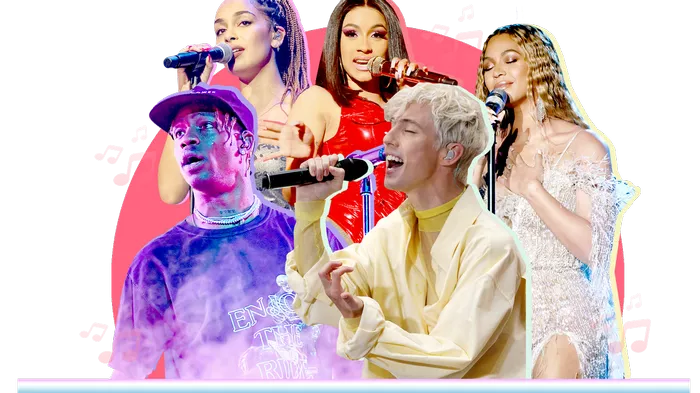Pop music, often hailed as the heartbeat of the music industry, has long been a topic of discussion: Is it a genre in its own right, or is it better described as a style? While many perceive pop music as a distinct genre, the reality is more intricate. In truth, pop music embodies a style that seamlessly weaves together elements from various genres, crafting a unique sonic tapestry that has captivated the masses. Let’s dive into this musical conundrum and explore the essence of pop music as a style rather than a genre.
The Fluidity of Pop Music: Defining Boundaries
The distinction between genre and style is not always clear-cut. Genres typically categorize music based on shared musical characteristics, themes, and cultural origins. Styles, on the other hand, encompass the manner in which music is presented and the aesthetic choices that shape its sound. In the case of pop music, it can be argued that it defies the confines of a traditional genre label, instead embracing a fluidity that draws from an array of musical genres.
A Medley of Influences: The Essence of Pop
One of the defining characteristics of pop music is its ability to borrow, blend, and reimagine elements from various genres. From the infectious melodies reminiscent of rock and roll to the pulsating beats of disco and dance, pop music is a canvas upon which diverse influences are artfully woven. This eclecticism has enabled pop music to remain relevant and adaptable across generations, appealing to an ever-changing audience with evolving tastes.
Pop’s Evolution Through Time: A Testament to Style
Over the decades, pop music has undergone a remarkable evolution, mirroring the shifting cultural landscapes and technological advancements. From the bubblegum pop of the 1960s to the electronic-infused hits of the 2000s and the contemporary pop-rap fusion, the genre-style hybrid has allowed pop music to continuously reinvent itself. Each era’s pop sound is not limited by genre constraints but rather defined by the stylistic choices that resonate with the prevailing cultural climate.
Fusion and Collaboration: The Essence of Pop’s Style
Pop music’s allure lies in its capacity to unite artists from disparate backgrounds, creating collaborations that transcend genre boundaries. These partnerships result in chart-topping hits that defy categorization. Iconic duets like “Under Pressure” by Queen and David Bowie, and “Ebony and Ivory” by Paul McCartney and Stevie Wonder exemplify how pop’s style transcends genre barriers, producing music that resonates universally.
FAQs: Demystifying Pop Music’s Identity
Q1: Can pop music have subgenres despite being a style?
A1: Absolutely. Pop music’s diverse nature allows for the emergence of subgenres that further explore specific sonic elements. Subgenres like pop-rock, electro-pop, and pop-rap demonstrate how pop’s style can adapt and incorporate distinctive genre traits.
Q2: Is pop music’s style consistent across cultures?
A2: Pop music’s style is adaptable and influenced by cultural nuances. While its core elements may remain, the style can vary based on the cultural context, resulting in unique interpretations of pop across different regions.
Q3: How does pop music’s style impact its commercial success?
A3: Pop music’s versatile style has contributed to its commercial success. Its ability to draw from various genres and create catchy, accessible tunes has made it appealing to a wide audience, contributing to its popularity on charts and in the mainstream music scene.
In Conclusion: Pop Music as an Ever-Evolving Aesthetic
The enigma of pop music’s identity as a genre or style unveils a captivating reality: pop music is more than just a genre—it’s a mélange of styles that celebrates artistic innovation and collaboration. Its adaptability and propensity to integrate diverse influences have rendered it a timeless sonic force. Whether borrowing from rock, dance, or rap, pop’s style continues to shape the musical landscape, captivating hearts and ears worldwide.

